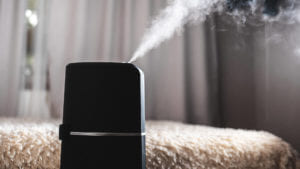Common Household Pests: Top Tips on Prevention and Control
We’ll open our doors for visiting family members and friends, but we usually don’t welcome unwanted critters inside. Pests are the scourge of homeowners, causing untold misery to thousands of unsuspecting households up and down the country.
Let’s look at some numbers to gauge just how pesky these pests can be:
- 56 percent of households have had an ant infestation problem in the last 12 months.
- A single flea can lay up to 25 eggs per day. That’s per day!
- A single rat can produce up to 84 offspring in a year.
- Termites cause an estimated $5 billion of structural damage every year.
- Many pests, like rats, mice, fleas, and ticks can carry life-threatening diseases.
Getting rid of pests is of paramount importance if you want to keep your home and your family safe from harm. In this article we look at the most common household pests and what steps you can take to prevent or free yourself from them.
Most Common Pests
Rodents
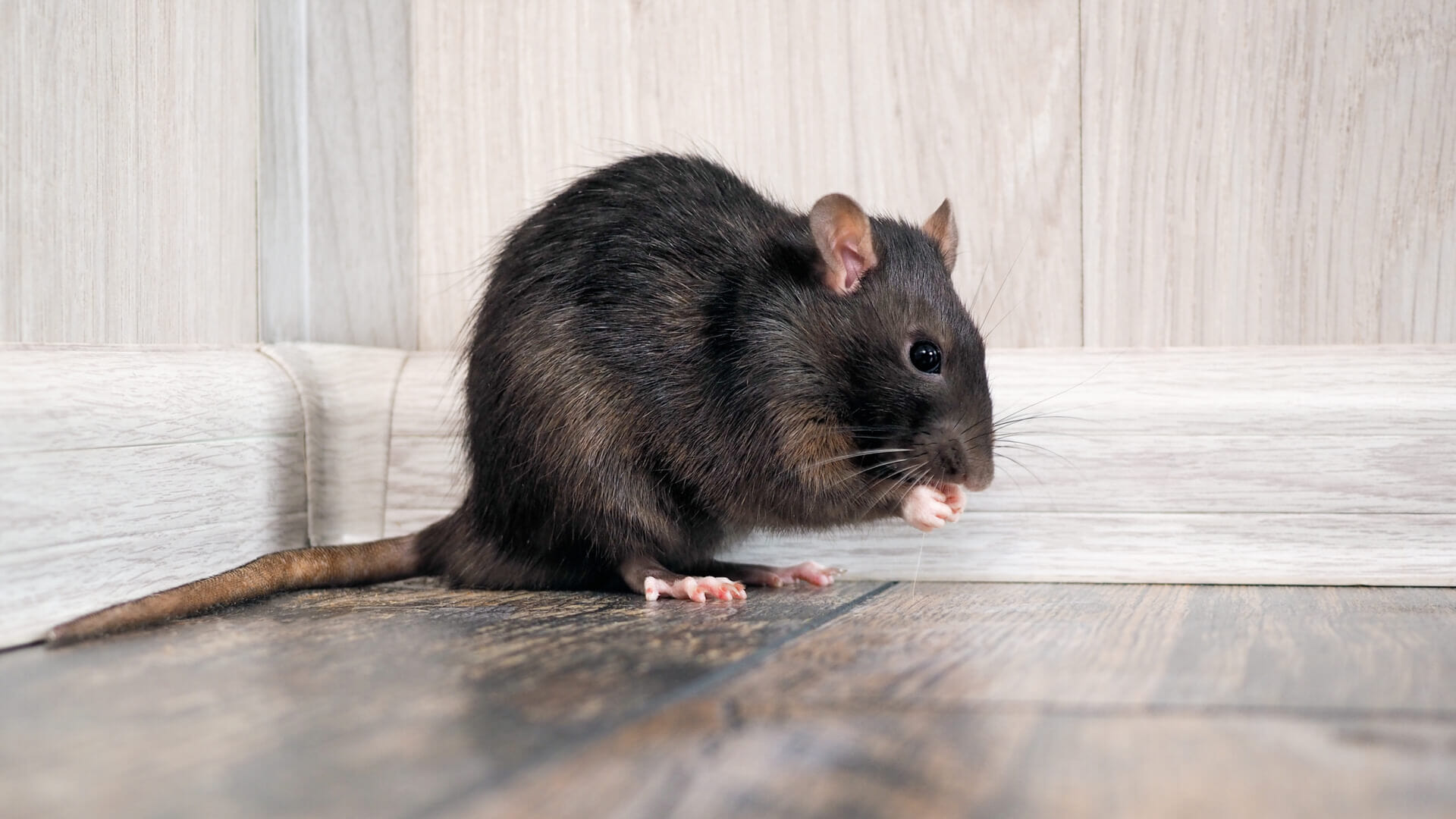
Rats and mice are the most common rodents to infest your home, with specific non-native varieties that are causing the most damage. The Norway rat, for example, is on the increase and particularly partial to the comforts of your home.
According to the Center for Disease Control (CDC) rate and mice are responsible for spreading over 35 diseases worldwide, including rat-bite fever and hantavirus pulmonary syndrome, both of which are transmitted through coming into contact with the urine or feces of the rodent. It isn’t just dirty homes that rodents like; often they will enter houses during cold spells to find shelter and warmth.
Tell-Tale Signs
Signs that tell you if you are the victim of a rodent infestation might be the presence of droppings, usually in a concentrated area; shredded paper and cardboard that mice and rats like to use as bedding; and chewed food packaging in pantries or cupboards.
Prevention and Cure
When dealing with rodents, think practically and then decide whether or not your approach is going to be humane. To simply repel them from your property, you can try:
- Fill in holes – Check for holes and tiny gaps on the outside of your home, keeping in mind that the average rat can squeeze into a space just half an inch in diameter.
- Mice hate peppermint – Planting lots of mint around the base of your house should deter them.
- Keep trash can lids secure – Rats and mice are attracted to food waste.
- Spices – Mice hate garlic, cinnamon, chili, and cayenne pepper, so you can make a spray with any combination of these spices and apply it to areas where mice may enter.
- For the actual trapping and elimination of these creatures, you can try:
- Lay traps – Lay traps around the home where you see droppings or entry/exit points.
- Poison – Lay down trays of poisoned pellets in secluded spots where you see feces and make sure that it is safely away from small children and pets. Always wash your hands after handling toxic chemicals.
- Ammonia – Soak a cloth in ammonia, put it inside a coffee can and place it where you see activity. Rats hate the smell of ammonia and will leave.
If you are going to adopt a deadly approach, just be aware that once the rat digests the poison, often they will crawl back to their nest to die. This can leave your home smelling foul as the corpse decomposes and also raises the risk of a subsequent infestation of flies and maggots.
Birds
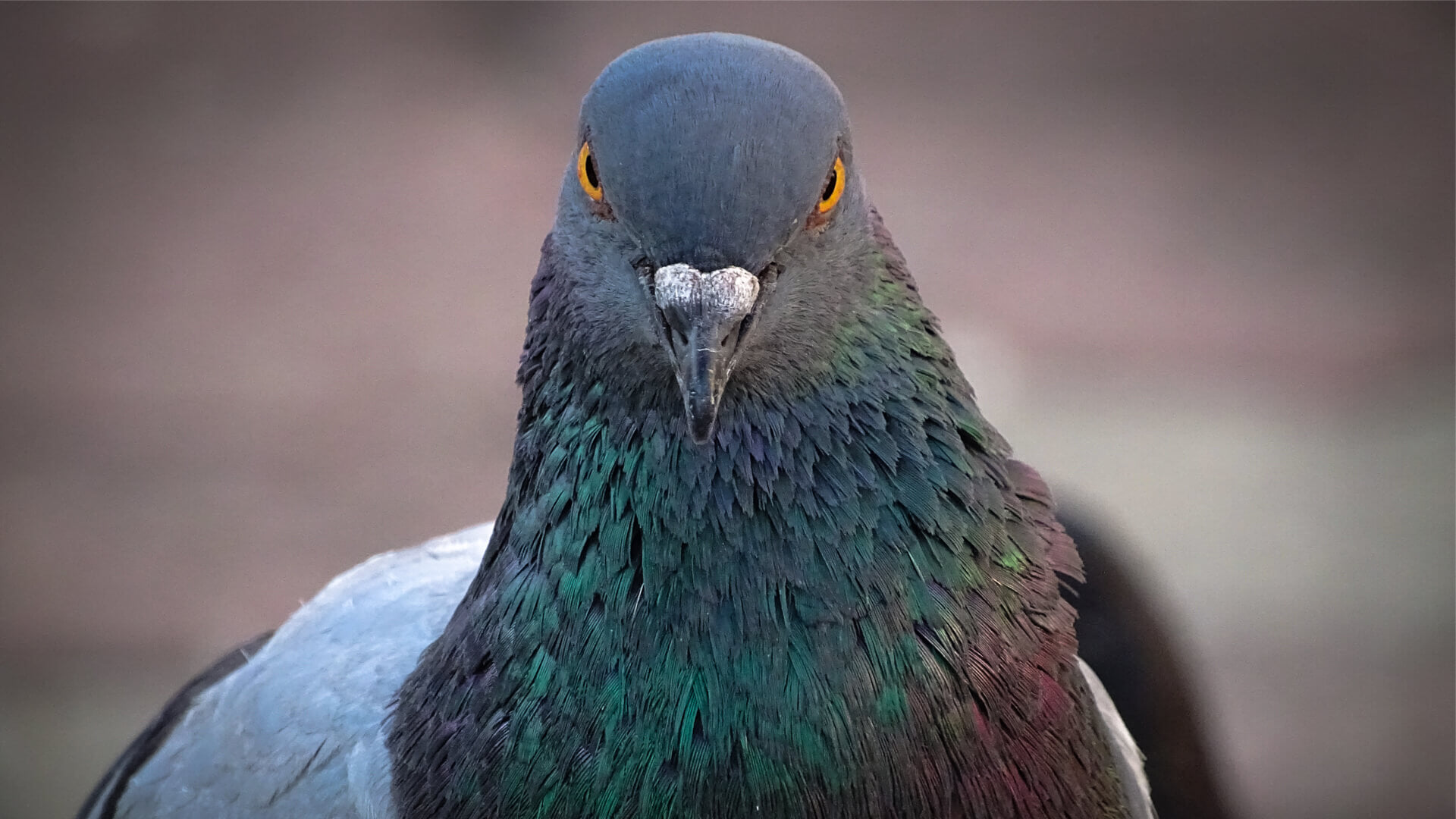
Even common birds like pigeons or house sparrows can cause significant health risks if left untreated. There are 3 types of diseases transmitted by birds:
- Bacterial
- Fungal
- Viral
In isolation, there is a minimal risk to human health, but if the infestation grows, or you have a lot of feces, then the dust created when dry can spill into your home. This can cause respiratory diseases like histoplasmosis, salmonella if the contaminated air comes into contact with your food or skin, and even avian influenza, or “bird flu” as it’s more widely known.
Tell-Tale Signs
Look for large holes under to eaves of your house, usually where the roof and walls join. Also, you may see a higher concentration of feathers and other bird waste, like straw, grass, and twigs.
The most obvious sign that you have feathered guests is the increase in bird droppings or foul odors around the perimeter of your home. You may also notice a higher concentration of flies, as birds attract them.
Prevention and Cure
- Food and Water – All animals seek a source of readily available food and water, so if you remove any bird feeders or baths in your garden then the birds won’t feel compelled to set up home to take advantage of your hospitality.
- Ground Cover – If you have a densely covered garden that offers good ground coverage, birds can look for food while staying hidden from view. By removing the foliage and exposing the ground, birds are inclined to move on.
- Sonic deterrent – You could invest in a sonic deterrent that broadcasts bird distress or predator calls to confuse the birds and scare them away.
- Maintenance – Fix any loose or missing tiles immediately to stop nesting birds. You can also repair any holes in fascias that give them a place to nest.
- Garlic – Like mice, birds hate the smell of garlic, so spray garlic oil liberally in the places that you think are infested.
- Bird netting – This netting stops pigeons and any other avian wildlife from landing as they get caught up in the netting. The downside is that this netting looks unsightly, and if they become tangled, birds can’t escape and inevitably die ensnared.
- Phony birds – Plastic imitation birds may ward away any would-be winged intruders.
- Bird spikes – These are simple plastic spikes on a strip that attach to the surface of the area that you think may be vulnerable to attack.
Wasps, Hornets, and Bees
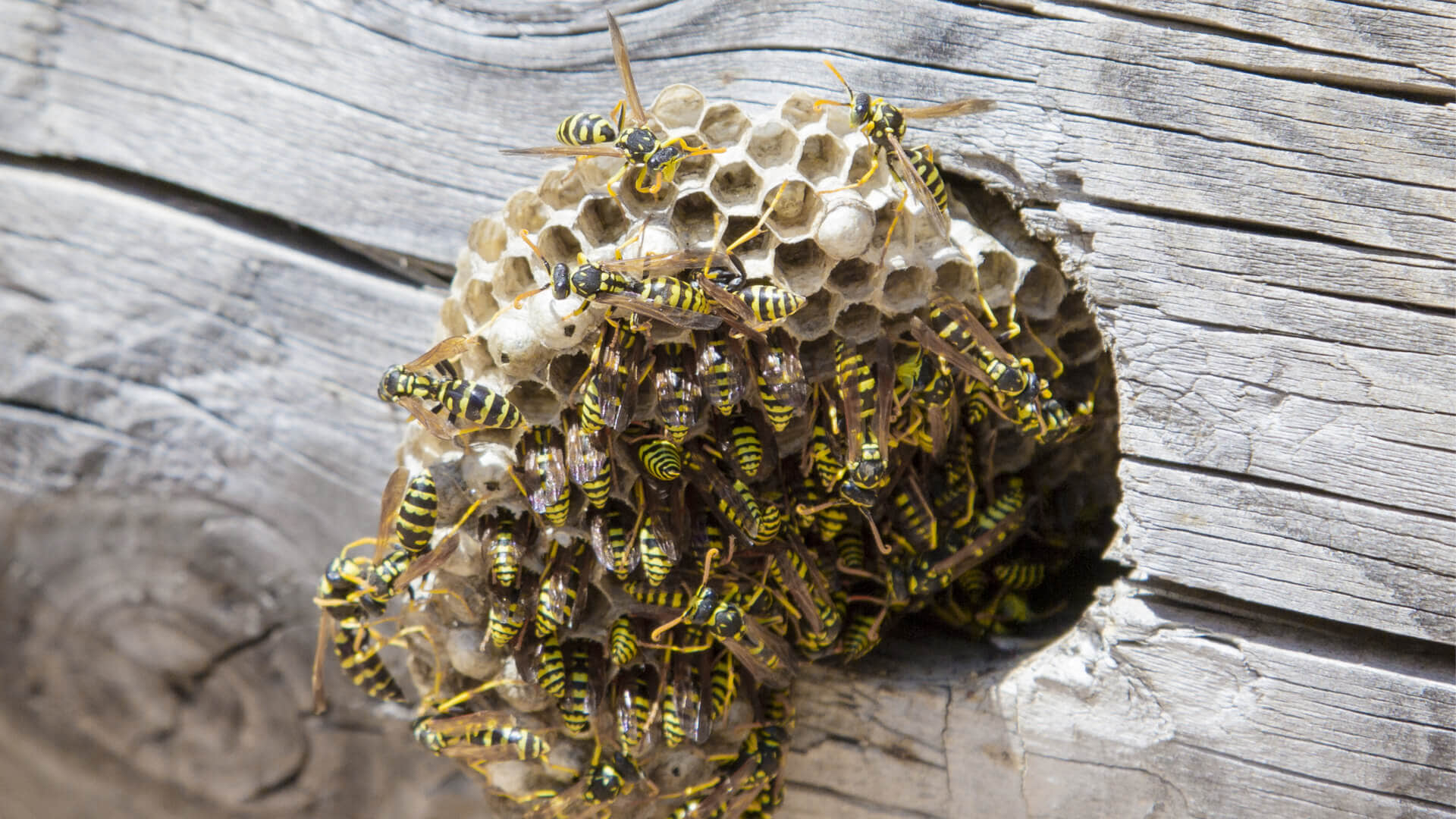
These stinging bugs like to make their nests in parts of the house that usually go uninspected, like lofts, crawl spaces, ducting, under decking, garages, and wooden fascias.
This is one area of infestation where we would strongly recommend calling in the professionals. There are an estimated 220,000 visits to the emergency room every year as a result of bee, hornet, or wasp stings, that result in over 60 fatalities. You will probably survive a single hornet sting (a larger member of the wasp family), but remember that hornets release more venom per sting than any other stinging insect. When a swarm attacks, it could be fatal.
Tell-Tale Signs
Look for lots of wasps or bees congregating in one part of the home; you can also look for chewed wooden fascias and boards on the exterior of the house or suspicious holes that weren’t there previously. These are all signs that you have an infestation.
Prevention and Cure
If you suspect a severe infestation, proceed with caution and don’t take unnecessary risks. For minor instances, consider the following;
- Maintenance – Like all other invaders, stinging bugs (that’s how we’ll refer to them) are opportunists and seek out gaps, holes, and secret entrances to your house. Loose or broken tiles offer precisely that opportunity.
- Decoy wasps – Wasps don’t build their nests within 200 ft of a nearby nest, so deploying a few paper decoys could be enough to deter them from setting up home.
- Sugar – Sugary foods attract wasps and bees like a drug. Keep them under wraps and never near an open window or doorway.
- Tree sap – Sweet tree sap is another encouragement for them to use your garden or home as a 24-hour diner. Remove any trees that are close to your property, especially if they are producing large amounts of sap.
- Trash can lid – Again, this is a recurring theme and one that proves that all of these invaders are scavengers at best. Food waste in uncovered trash cans is an open invitation for infestations.
- Dusk and dawn – If you are going to DIY your wasp infestation, treat the nest with an insecticide at either dusk or dawn, as they are less active during these periods. If you do opt for this route, wear thick gloves and stay covered up completely. We wouldn’t recommend doing this yourself due to the severe threat of injury.
Termites

- Termites – Termites love moist, hidden, and warm spaces to hide. Even the soil that your house stands upon could be a breeding ground for termites. Once a termite colony takes hold of your property, they could cause severe damage, especially if they go unchecked.
- The average termite colony is roughly 60,000 strong, with some colonies topping 2 million. They work 24 hours a day without stopping, and cause damage to the structure of your house. Since the damage takes place over a typical period of 3 to 8 years, often by the time you notice, it’s too late.
- Termite Tell-Tale Signs
- Wood damage – Look for damage to walls and floors behind skirting and door frames. Termites will also often eat through drywall plaster, leaving small holes as a sign of infestation. Discarded wings are another visible sign of infestation by termites. They tend to collect next to closed windows, doors and other entry points.
Prevention and Cure
- Reduce moisture levels – Poorly regulated humidity can encourage these critters to your home. Dehumidifiers or humidifiers, depending on the levels of moisture, can help to control the air quality and decrease the chances of creating a perfect environment for termites.
- Maintenance – This one crops up again and again, but keeping your home in peak condition is crucial to keeping unwanted inhabitants at bay.
- Damp wood – Termites often set up colonies in damp wood and fallen trees. Any laying in the backyard or near the house should be removed to prevent the termites spreading to your home.
- Leaking pipes and faucets – Water ingress causes moisture in the fabric of the building as well as the soil foundations. Termites are attracted to the wettest environments.
- Functioning gutters – It is essential that during the wetter seasons, water must be allowed to drain away from your house. For that reason, removing blockages from channels and downspouts is crucial to controlling levels of dampness in the home.
- Dehumidify the crawl spaces – Often the crawl spaces are the dampest as they are in direct contact with the earth. By fitting a dehumidifier, you can control the moisture levels in the atmosphere to keep termites at bay.
Bugs
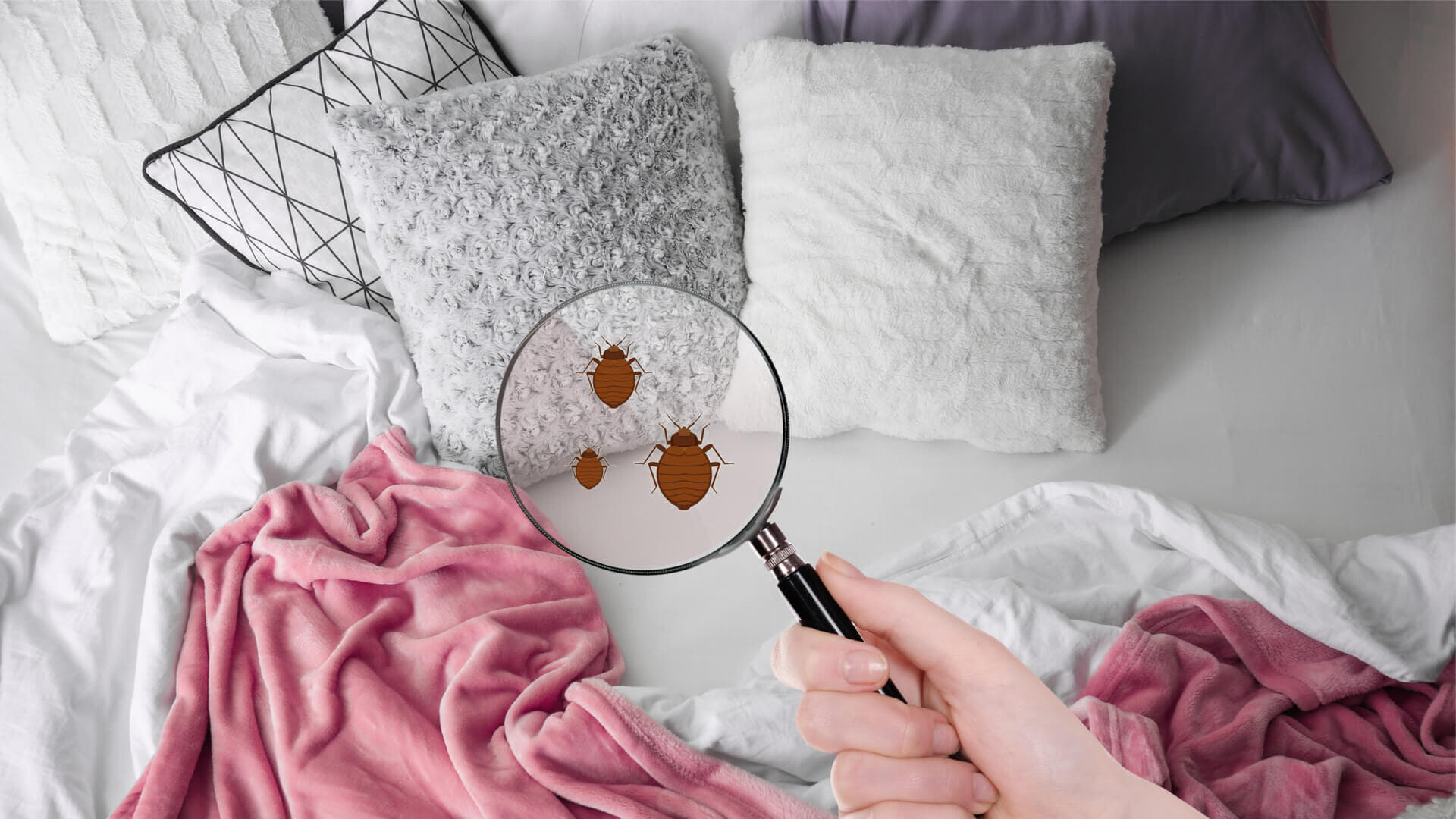
This is a general term for a multitude of little house invaders that may be small in size but great in number. Let’s look at some of the usual suspects and how to combat them.
- Fleas – Control starts with the outside of your home: keep tall grass and shrubs cut back because fleas love a protected spot where they can lay their larvae. Wind and sunlight are the enemies of flea eggs, so let nature do its thing. Fleas can also be treated with powder and pet treatments.
- Ants – Try to avoid leaving sweet things by open doors and windows. Also, weed patios and fill in holes on the outside of the house regularly to stop an infestation. Ants also dislike lemon, vinegar, spices, peppermint oils, and coffee grounds.
- Cockroaches – These critters at times can seem indestructible. They can carry bacteria and will enter your home through hidden doorways attracted by food, dirty dishes, and crumbs on the floor. The best way to avoid an attack is to keep your home clean and block up any entry points. If you want to further prevent them from entering your home, try using catnip, garlic, peppermint, or bay leaves.
- Bed Bugs – These creatures are microscopic, so you may not even know that you have them. Look for rusty or reddish stains on sheets or mattresses, and check for a musty smell too, as they secrete this from their glands.
Final Thoughts
It seems that there are a few guiding principles that govern how successful you are at preventing infestations of unwanted house guests, and they seem to center around good lids for your trash cans, and maintenance of your property. By ensuring that you keep your property in tip-top condition, you minimize the risks of small invaders and improve the value of your home. At the same time, don’t forget the magic properties of herbs and spices when it comes to warding away insects.


